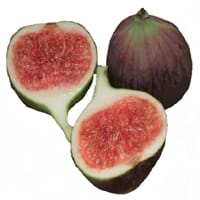Health Benefits
Cancer prevention, Controls blood pressure, Heart care, Increase in haemoglobin, Prevents constipation, Prevents macular degeneration, Reduces nervous tension
Cancer prevention, Cures gastro-intestinal troubles, Heart care, Muscle pain relief, Prevents blindness from diabetes
General Benefits
Controls blood pressure, Helps in weight loss, Maintains healthy cholesterol level, Strengthens bones
Boosts immune system, Digestive aid, Fights against infections, Helps in weight loss, Maintains healthy cholesterol level, Strengthens bones
Skin Benefits
Brightens and lightens complexion, Hydrates skin, Skin rejuvenation, Treatment of acne
Anti-aging benefits, Skin rejuvenation
Hair Benefits
Good conditioner, Regulates hair growth, Softening mask
Promotes longer and healthier hair, Protects hair
Allergy Symptoms
Abdominal pains, Anaphylaxis, Coughing, Headaches, Hives, Itching, Nasal congestion, Skin rash, Sneezing, Sore throat, Swelling of hands
Coughing, Diarrhea, Headaches, Hives, Itching, Labored Breathing, Nausea, Runny nose, Swelling of mouth, tongue or lips, Vomiting, Watery eyes
Side Effects
Allergic reaction, Skin rash, Possibly unsafe during pregnancy
May cause abdominal pain, Diarrhoea, Mouth irritation, Throat irritation, Weight gain
Best Time to Eat
Best if taken as a breakfast (or empty stomach), Don't consume at night and before bed, Morning time (before lunch)
As a snack in the late afternoon, Don't consume at night and before bed, Eat the fresh ones, avoid mixing with any other foods, don't eat after meal., Morning time (before lunch), Strictly avoid empty stomach
Vitamin B5 (Pantothenic Acid)
Vitamin C (Ascorbic Acid)
Vitamin K (Phyllochinone)
Phytosterol
Not Available
Calories in Fresh Fruit with Peel
Not Available
Calories in Fresh Fruit without Peel
Not Available
Type
Tree fruit
Tree fruit, Tropical
Season
Summer, Winter
Spring, Summer
Varieties
Abyad, Adriatic, Alma, Atreano, Bataglia, Black Bethlehem, Black Madeira, Black Mission, Brown Turkey, Sierra, Calimyrna, Kadota, Deanna, Figoin and Hardy Chicago Fig
Emperor fruit, Mauritiu, Sweet Heart, Brewster, Haak Yip and Bengal
Color
Green, Purple, Red
Bright red, Pink red
Inside Color
Pink
Greyish-white
Taste
Sweet
Crunchy, Juicy, Sweet
Origin
Western Asia
China, Indonesia, Philippines, Vietnam
Soil Type
Clay, Limestone, Loam, Sandy
Alluvial, Loam, Well-drained
Climatic Conditions
Dry, Warm
Absence of strong wind, Cold, Dry, Without frosts
Facts about
- Fig tree is considered as a symbol of abundance, fertility and sweetness.
- The fig is made up of 55% of natural sugar so they are the sweetest fruits.
- Figs are used as a fat substitute in recipes.
- The seed of Lychee fruit is toxic & can adversely affect the digestive system.
- This fruit gives a smoky flavor when eaten dried.
- This fruit is a symbol of love and romance in China.
Top Producer
Turkey
China
Other Countries
Albania, Algeria, Brazil, Egypt, Iran, Morocco, Syria, Tunisia, United States of America
Australia, India, South Africa, Thailand, United States of America
Top Importer
France
Hong Kong
Top Exporter
Turkey
China
Botanical Name
Ficus carica
Litchi chinensis
Synonym
Not Available
Nephelium litchi
Subkingdom
Tracheobionta
Tracheobionta
Division
Magnoliophyta
Magnoliophyta
Class
Magnoliopsida
Magnoliopsida
Subclass
Alismidae
Rosidae
Family
Moraceae
Sapindaceae
Species
Ficus carica
L. chinensis
Generic Group
Mulberry
Soapberry
Difference Between Fig and Lychee
We might think that Fig and Lychee are similar with respect to nutritional value and health benefits. But the nutrient content of both fruits is different. Fig and Lychee Facts such as their taste, shape, color, and size are also distinct. The difference between Fig and Lychee is explained here.
The amount of calories in 100 gm of fresh Fig and Lychee with peel is 74.00 kcal and Not Available and the amount of calories without peel is Not Available and 66.00 kcal respectively. Thus, Fig and Lychee belong to Low Calorie Fruits and Low Calorie Fruits category.These fruits might or might not differ with respect to their scientific classification. The order of Fig and Lychee is Rosales and Sapindales respectively. Fig belongs to Moraceae family and Lychee belongs to Sapindaceae family. Fig belongs to Ficus genus of Ficus carica species and Lychee belongs to Litchi genus of L. chinensis species. Beings plants, both fruits belong to Plantae Kingdom.









